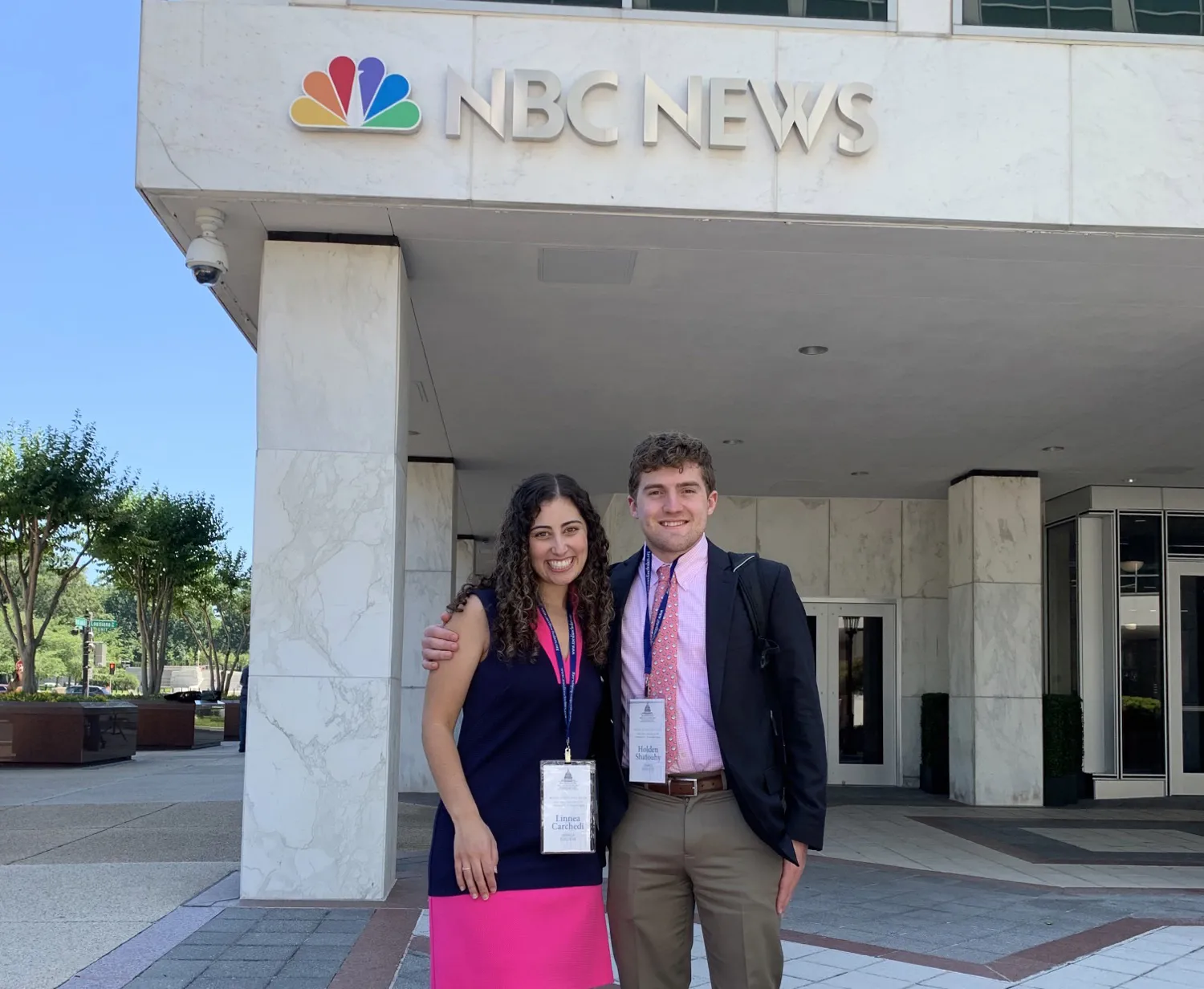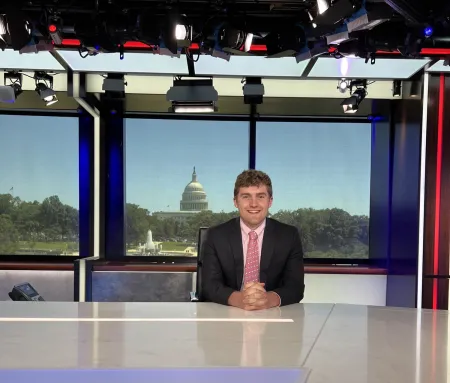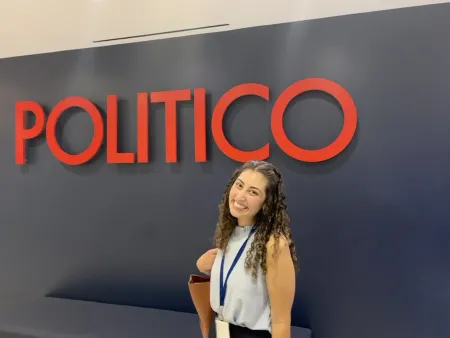When Linnea Carchedi ’23 and Holden Shatouhy ’23 made it all the way to the finals in the Washington Media Scholars Media Plan Case Competition, they must have thought about how every day across the world, passionate college students in classrooms have creative and ingenious ideas. These students and their ideas may receive acknowledgment from their professors and even praise from their peers, but very few get the once-in-a-lifetime opportunity to go on an all-expenses paid trip to the nation’s capital and have their talent, hard work, and unique vision validated by top industry leaders in positions they hope to one day hold.
Carchedi and Shatouhy are both Integrated Marketing Communications (IMC) majors at Ithaca College. When considering her college plans, Carchedi was impressed by the Roy H. Park School of Communications for its prominent reputation in media and was drawn to IMC because, according to Carchedi, “IMC combines data, math, and analysis with creativity.”
Shatouhy started out at IC as an exploratory student.
“I had no idea what I wanted to do,” he said. “I looked at IMC and it had the creative aspect, the design aspect, and you even get to take business school classes, so I gave it a shot.”
Both students took advertising with Department of Strategic Communication Chair and Professor Scott Hamula, who encouraged them to put their skills to the test and compete in the Washington Media Scholars Media Plan Case Competition. The competition invites teams of two people to use real data to create a media strategy for a hypothetical media company. After a double-blind review of submissions in the qualifying round of the contest against college students from across the country, the top 26 teams are chosen to contend in the semifinals where the media plan is reviewed by an expert panel of judges.


